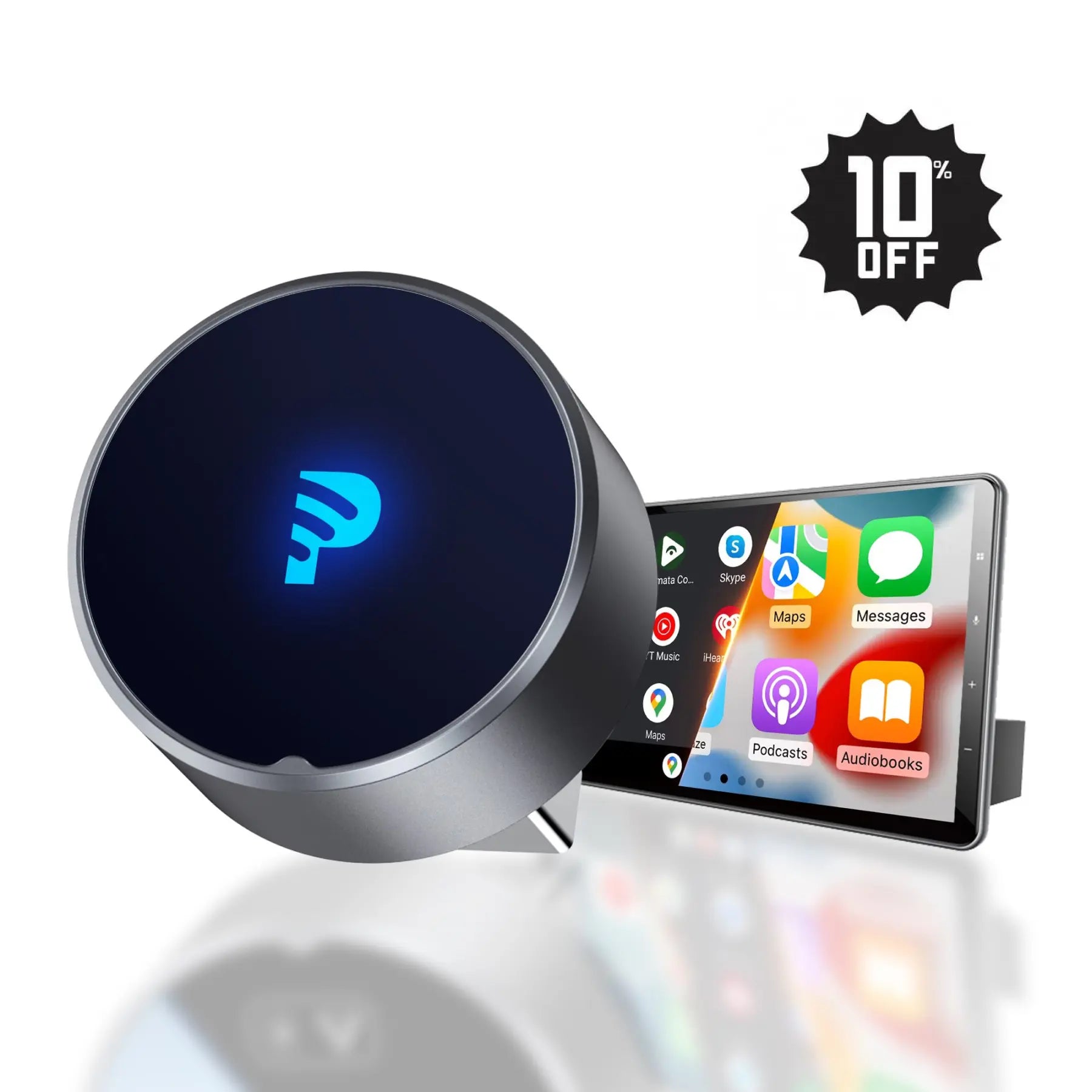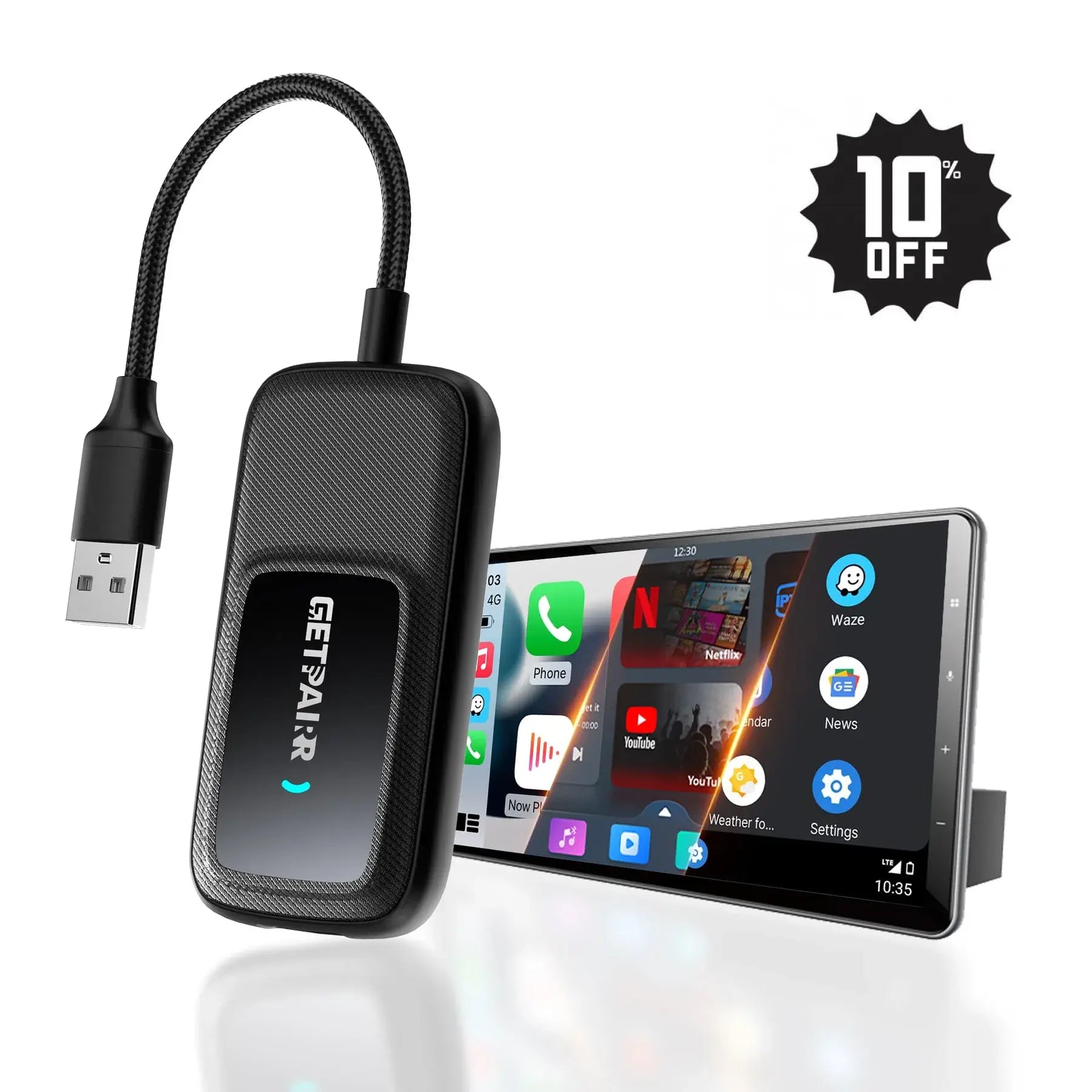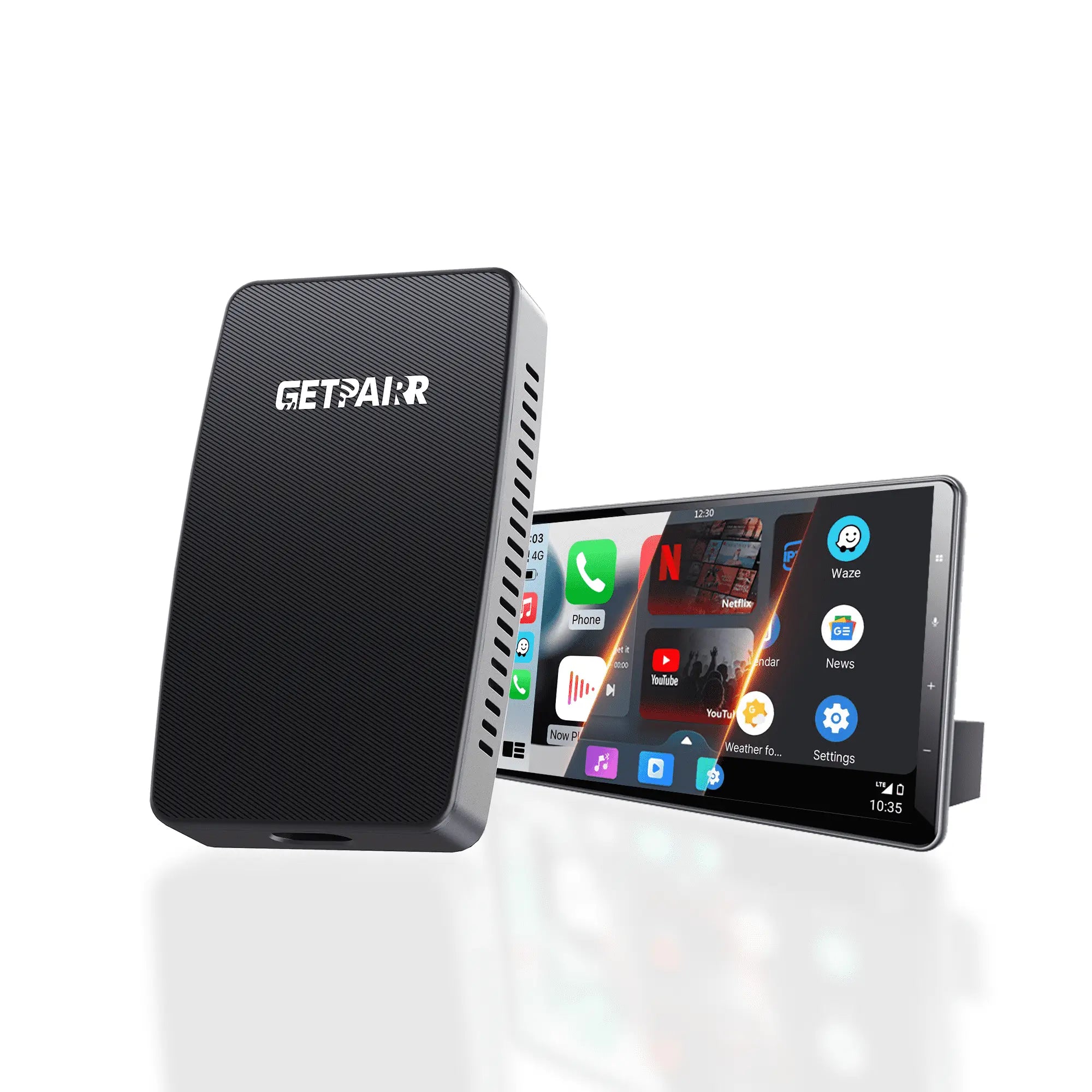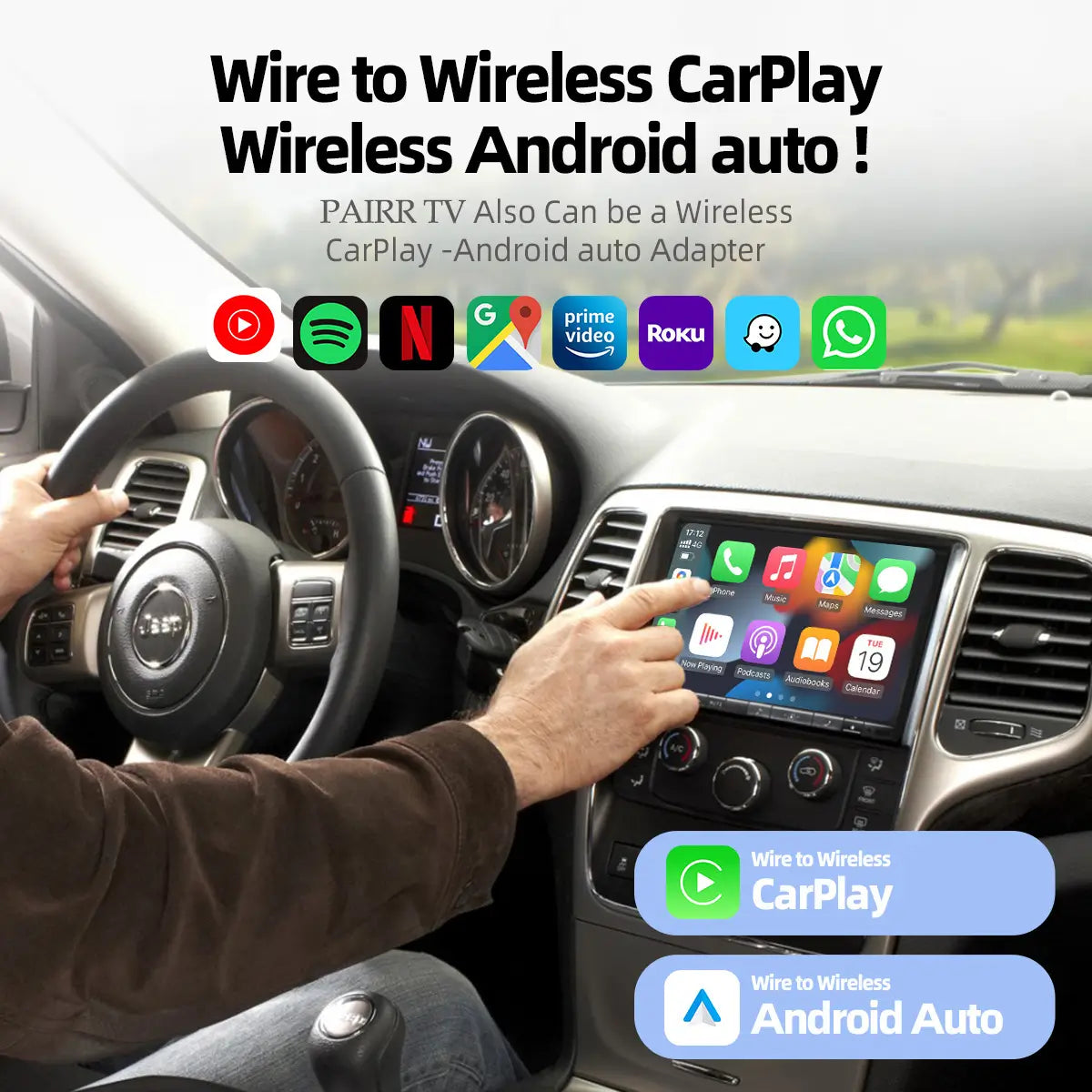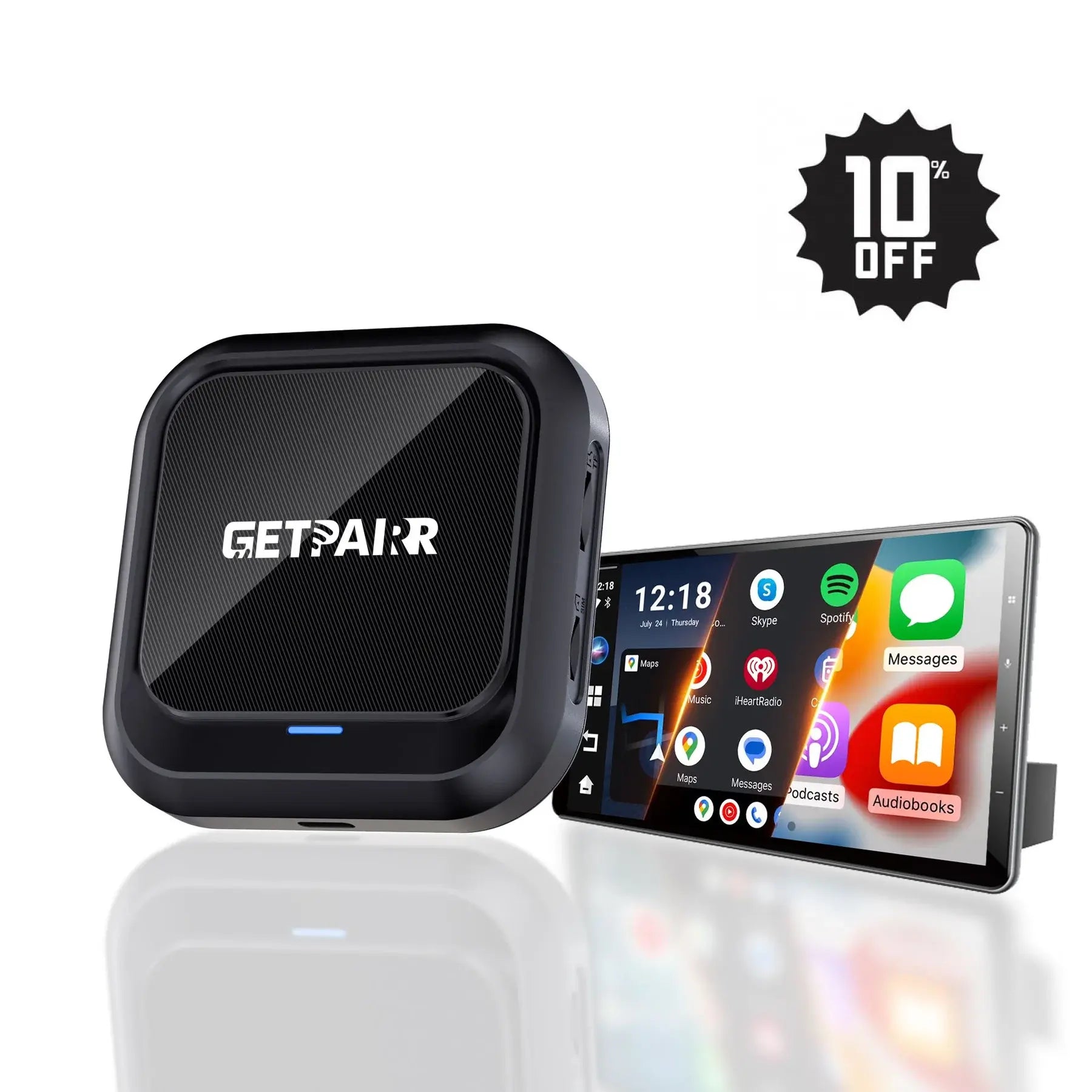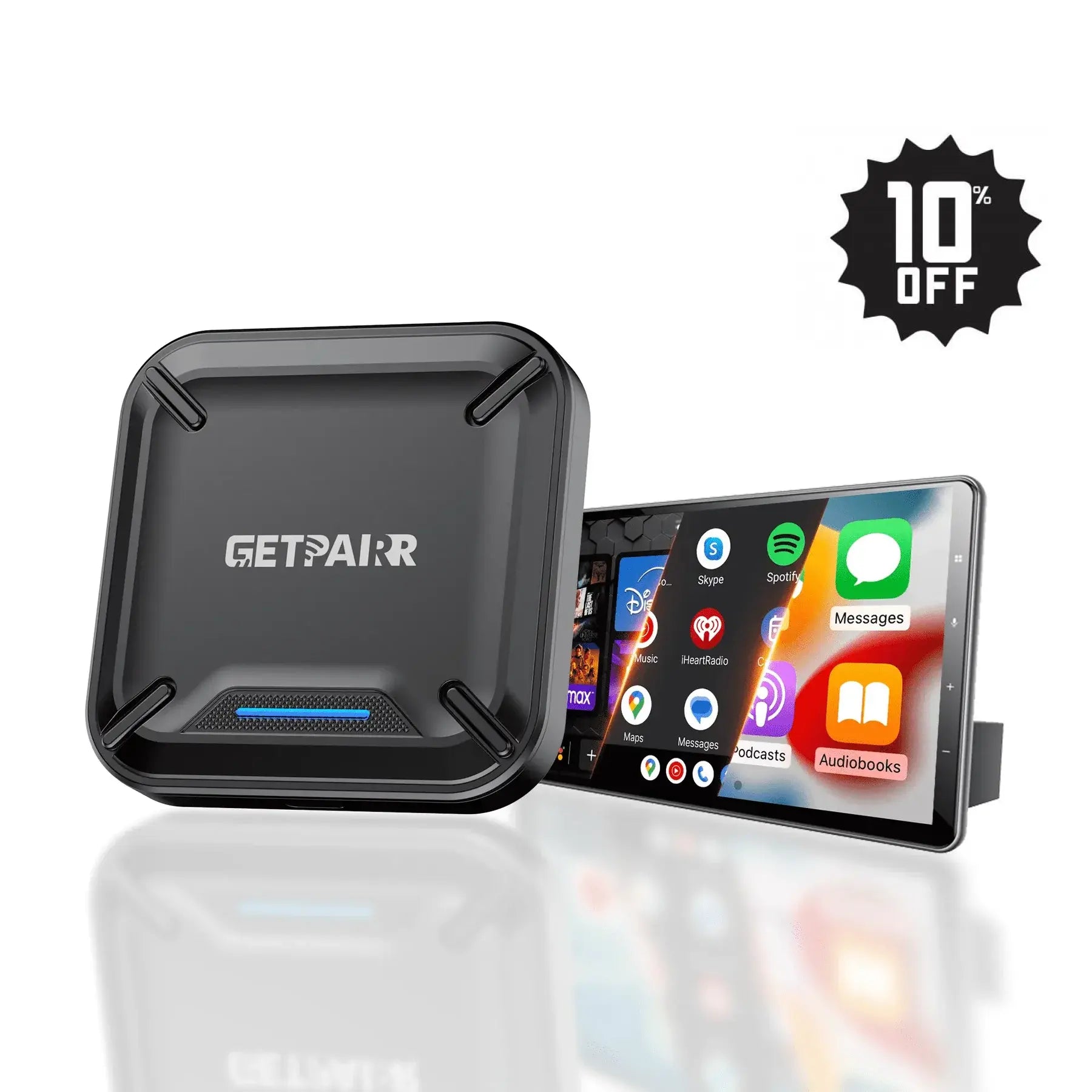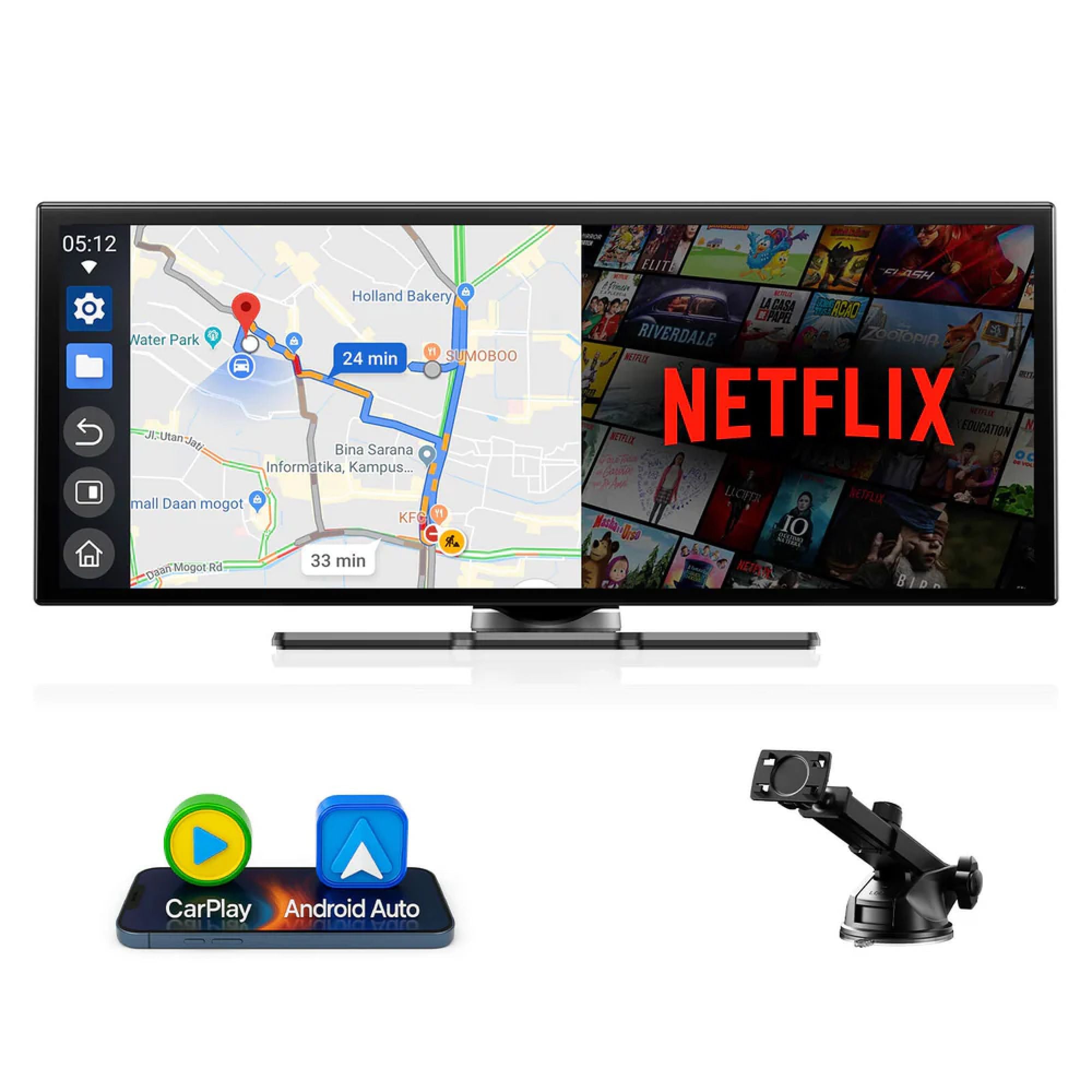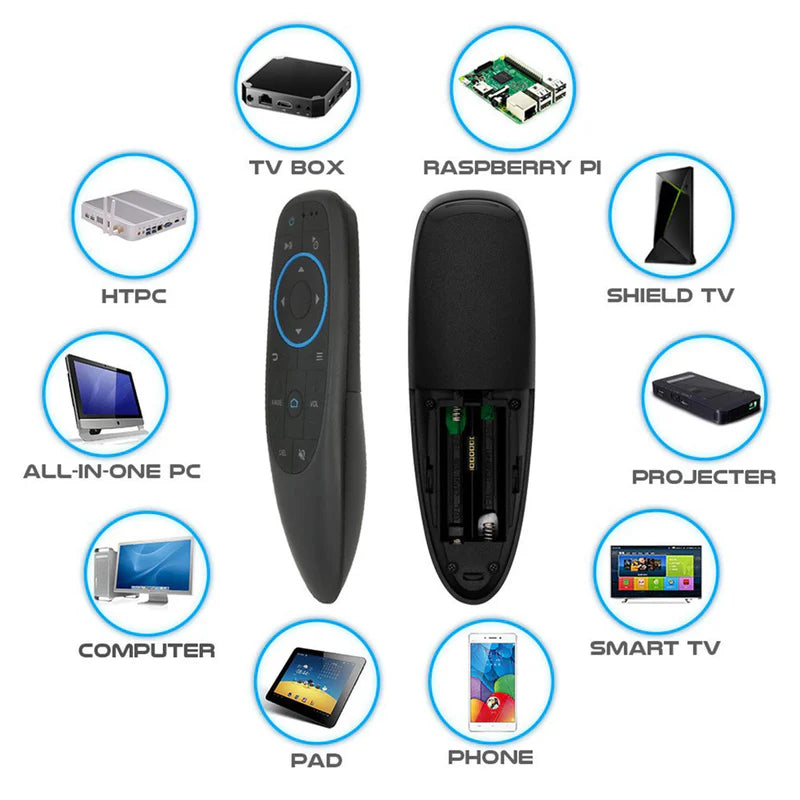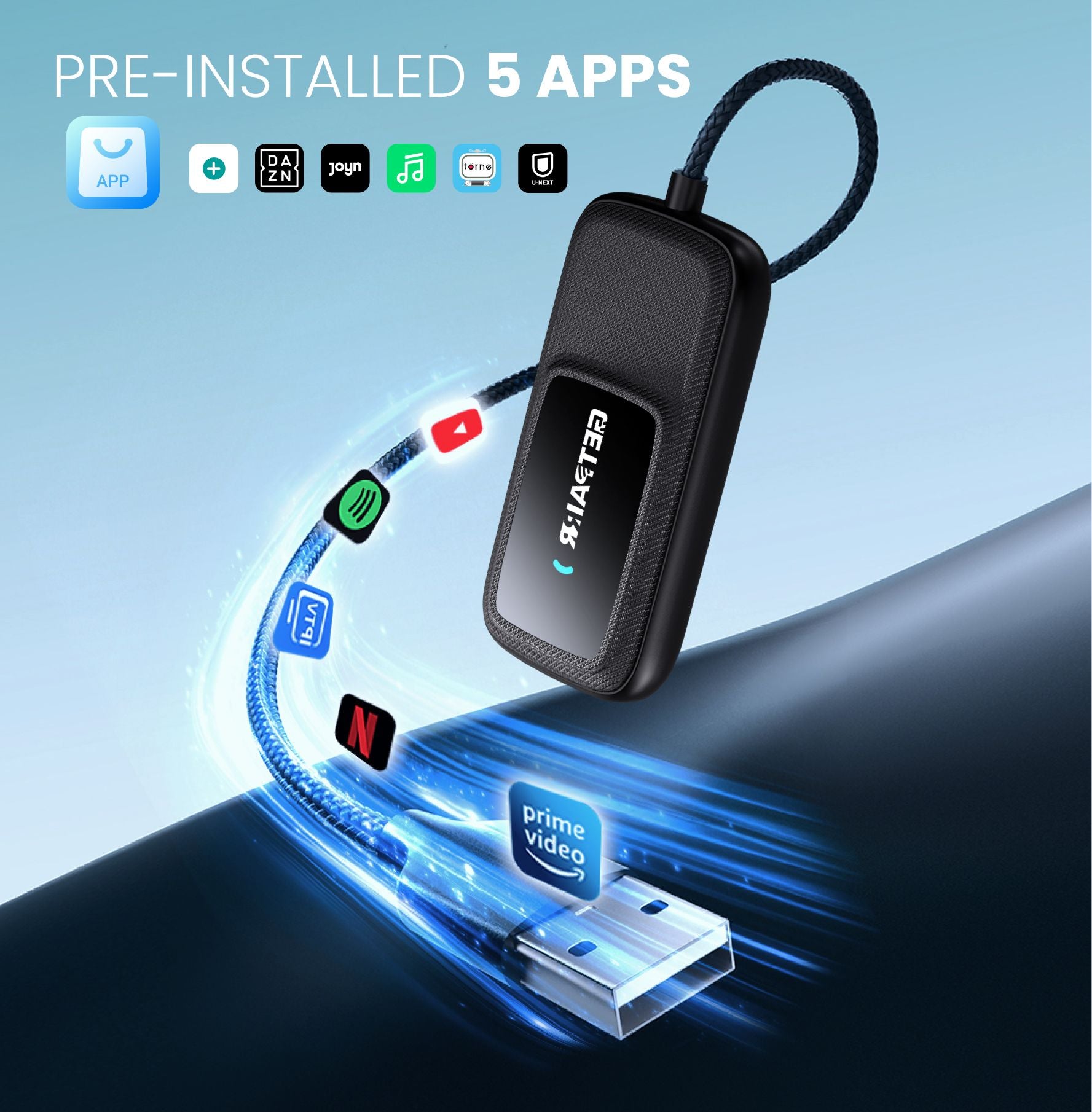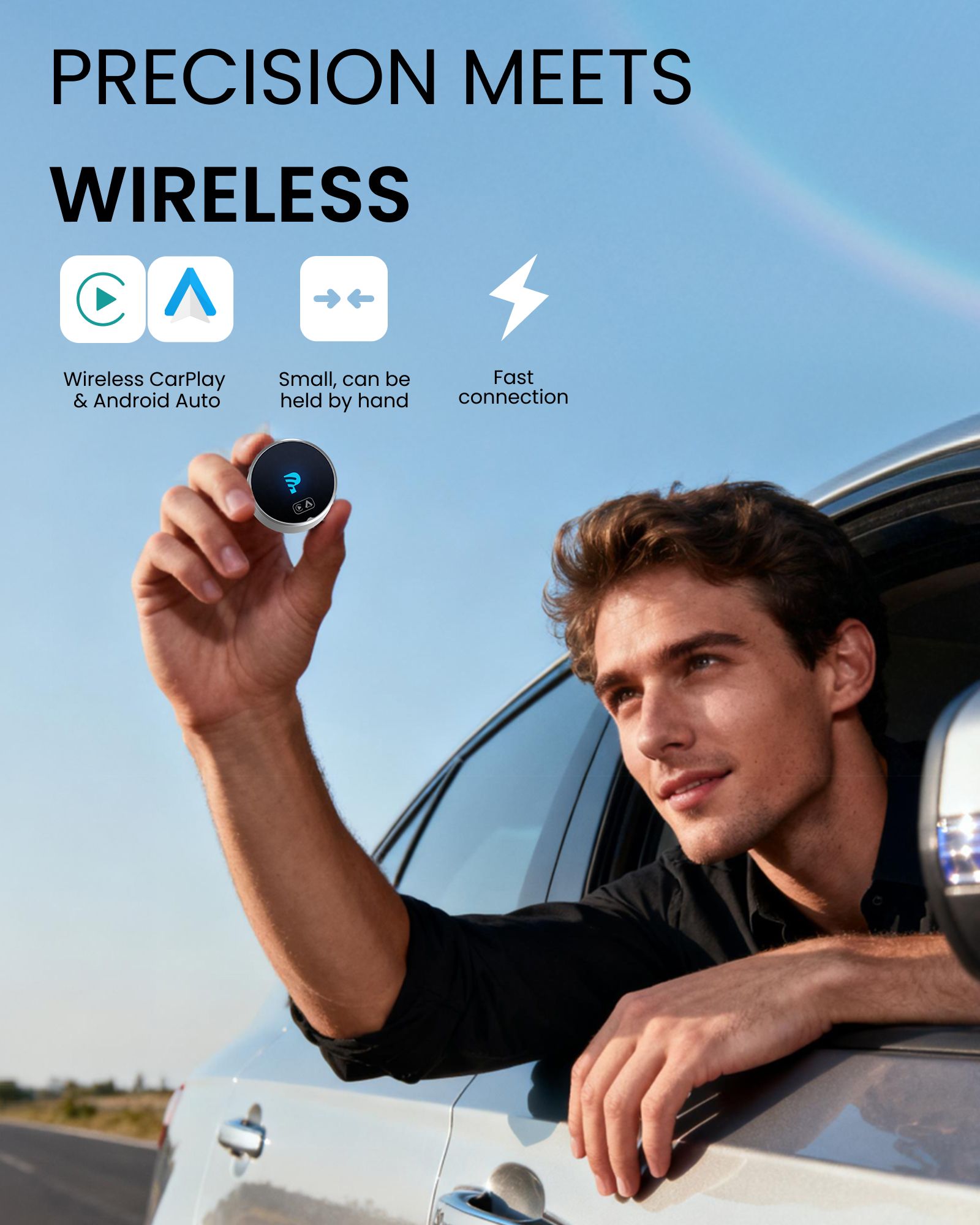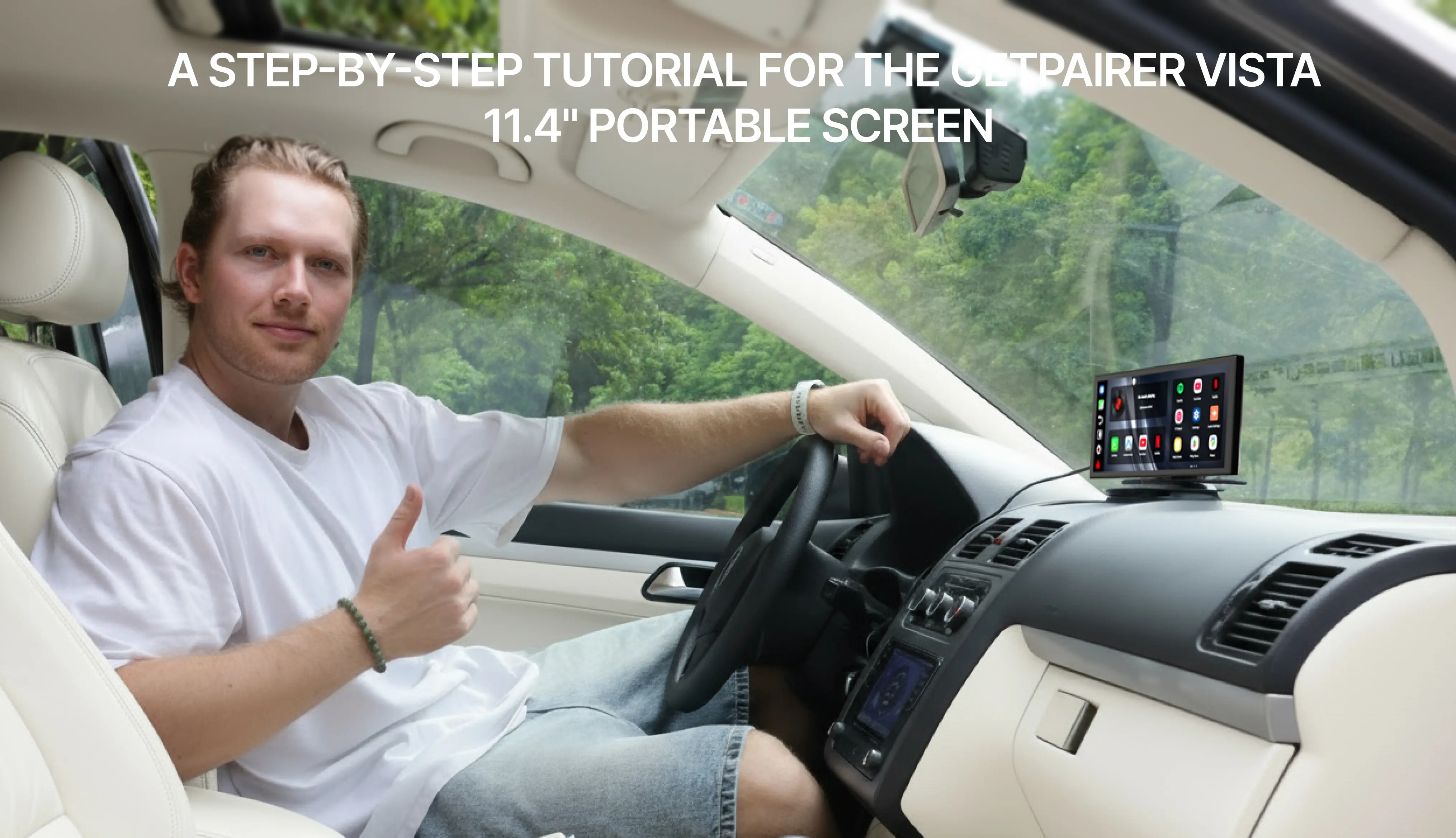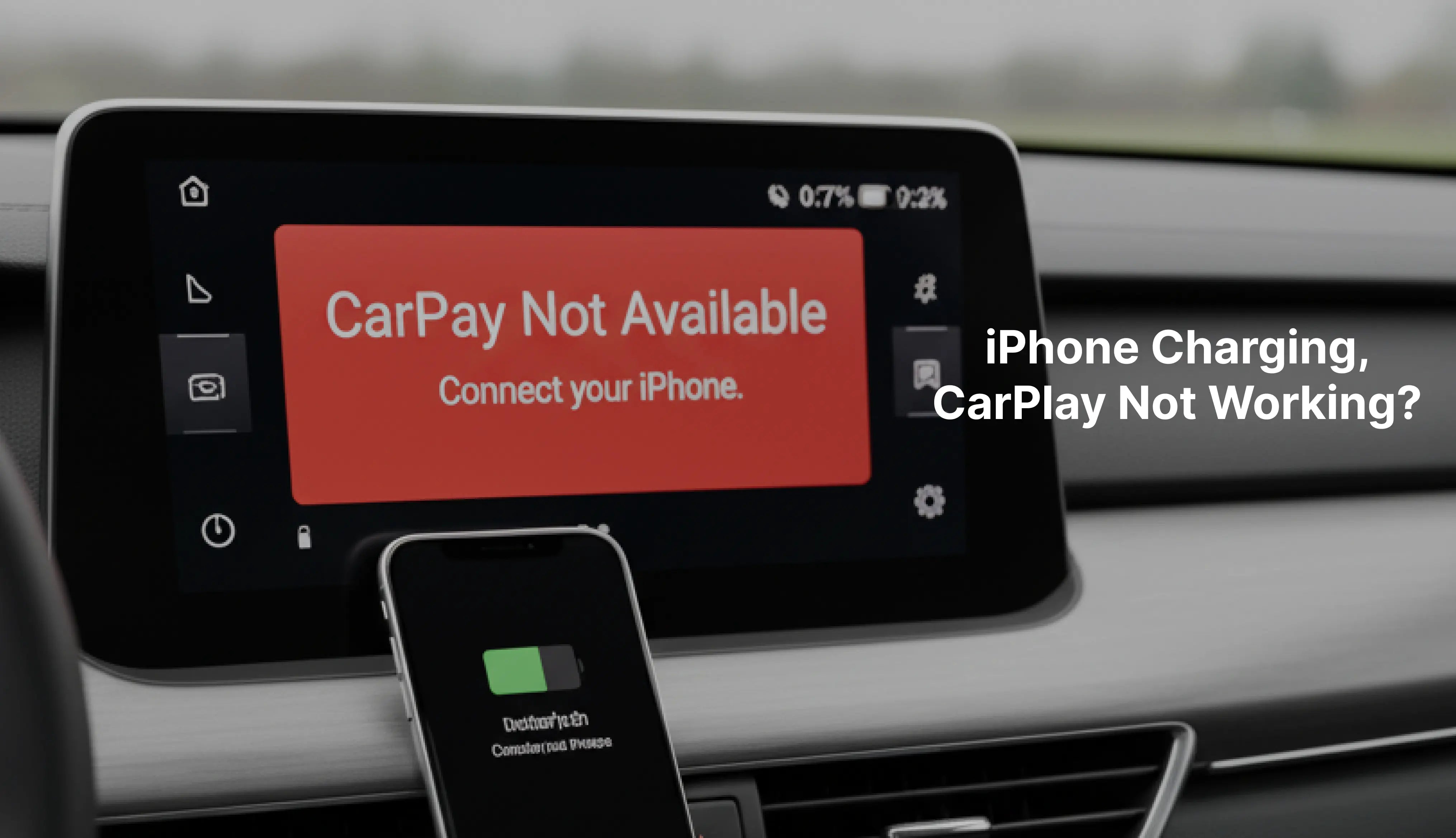Que sont exactement Apple CarPlay et Android Auto ?
Apple CarPlay
Android Auto
CarPlay vs. Android Auto : Explication des différences clés
Compatibilité et prise en charge des appareils
- CarPlay : Ne prend en charge que les iPhones, spécifiquement iPhone 5 et modèles plus récents (URL vers la liste officielle de compatibilité d'Apple). Si vous êtes un utilisateur fidèle d'Apple, CarPlay est votre seul et unique choix.
- Android Auto : Ne prend en charge que les téléphones Android, nécessitant généralement Android 8.0 ou version ultérieure (URL vers la page officielle des exigences de Google). Si vous utilisez un Samsung, un Google Pixel ou un autre appareil Android, vous utiliserez Android Auto.
Interface et expérience utilisateur
- CarPlay : Reste fidèle à la philosophie de design iOS : simple, uniforme et facile à apprendre. L'écran d'accueil est une grille familière d'icônes d'applications, créant presque aucune courbe d'apprentissage. Sa vue "Tableau de bord" offre un écran partagé pratique qui affiche votre carte, les contrôles média et le prochain événement du calendrier en un coup d'œil. Cependant, la personnalisation est limitée — vous pouvez changer le fond d'écran, mais vous ne pouvez pas réarranger la disposition des applications.
- Android Auto : Offre plus de flexibilité et de personnalisation. Son interface "Coolwalk" permet aux utilisateurs d'ajuster la disposition en écran partagé selon la taille de leur écran, par exemple en plaçant la carte dans la zone principale avec un lecteur média dans la barre latérale. Ce design est plus dense en informations mais peut sembler un peu plus complexe pour les utilisateurs préférant un look minimaliste.
Navigation et Cartes
- CarPlay : Utilise par défaut Apple Maps. Ces dernières années, Apple Maps s'est considérablement amélioré, offrant de magnifiques vues 3D des monuments, un guidage clair des voies et des informations sur les limitations de vitesse. Bien sûr, CarPlay prend également en charge pleinement les applications de navigation tierces comme Google Maps et Waze.
- Android Auto : intègre nativement Google Maps, ce qui est sans doute sa fonctionnalité phare. Avec sa vaste base de données, Google Maps a souvent un avantage en matière de mises à jour du trafic en temps réel, d'itinéraires précis et de recherches de points d'intérêt (POI). Pour les propriétaires de véhicules électriques, Google Maps peut également afficher les stations de recharge et planifier les itinéraires en fonction du niveau de batterie.
Assistants vocaux : Siri vs. Google Assistant
- CarPlay (Siri) : Siri est parfaitement intégré à l'écosystème iOS. Il est incroyablement efficace pour des tâches comme envoyer un iMessage, jouer une chanson spécifique sur Apple Music ou définir un rappel. Pour les commandes au sein de l'écosystème Apple, la réponse de Siri est rapide et précise.
- Android Auto (Google Assistant) : Google Assistant est largement considéré comme plus puissant et intelligent pour comprendre le langage naturel et gérer des requêtes web complexes. Que vous demandiez le "restaurant végétarien le mieux noté à proximité" ou que vous contrôliez des appareils domotiques, Google Assistant peut généralement fournir des réponses plus précises et des fonctionnalités plus riches.
Écosystème d'applications et disponibilité
- CarPlay : Suit la stratégie du « jardin fermé » d'Apple, avec un processus strict de validation des applications tierces. Vous pouvez consulter une liste des applications compatibles sur l'App Store (URL vers la section CarPlay de l'App Store).
- Android Auto : Est relativement plus ouvert, supportant une gamme plus large d'applications tierces. Vous pouvez trouver des applications compatibles sur Google Play (URL vers la section Android Auto de Google Play).
Avantages communs à l'utilisation de CarPlay ou Android Auto
- Sécurité renforcée : En utilisant les commandes vocales et une interface simplifiée, vous pouvez garder les mains sur le volant et les yeux sur la route, réduisant considérablement la conduite distraite (URL vers une autorité de sécurité comme la NHTSA).
- Navigation fluide : Utilisez les applications de cartographie les plus récentes et performantes de votre téléphone avec trafic en temps réel et guidage précis.
- Divertissement riche : Jouez facilement toute votre musique, vos podcasts et vos livres audio depuis votre téléphone pour rendre chaque trajet plus agréable.
- Restez connecté : Passez des appels en toute sécurité, écoutez et répondez aux messages texte sans manquer d'informations importantes.
- Expérience cohérente : Bénéficiez de la même interface familière et des mêmes fonctionnalités, quel que soit le véhicule compatible que vous conduisez.
Quand Apple CarPlay est-il le meilleur choix ?
- Vous êtes un utilisateur d'iPhone : C'est la raison obligatoire et la plus simple.
- .Vous êtes profondément ancré dans l'écosystème Apple : Si vous utilisez fréquemment iMessage, Apple Music, Apple Calendars et Siri, CarPlay offre l'intégration la plus fluide.
- Vous préférez la simplicité et l'intuition : Si vous appréciez une interface épurée, sans encombrement, et une expérience « ça marche tout simplement », la philosophie de conception de CarPlay vous conviendra parfaitement.
Quand Android Auto est-il le meilleur choix ?
- Vous êtes un utilisateur de téléphone Android : C'est la condition essentielle.
- Vous êtes un utilisateur intensif des services Google : Si Google Maps, Waze, Google Assistant et YouTube Music sont au cœur de votre quotidien, Android Auto maximisera leur potentiel.
- Vous appréciez la personnalisation et la flexibilité : si vous aimez ajuster la disposition de votre interface et avoir accès à une plus grande variété d'applications, la nature ouverte d'Android Auto vous offrira plus de liberté.
CarPlay vs. Android Auto : une comparaison côte à côte
| Fonctionnalité | Apple CarPlay | Android Auto |
| Appareils compatibles | iPhone 5 et plus récent | Android 8.0 et supérieur |
| Style d'interface | Simple, uniforme, à la manière d'iOS | Flexible, personnalisable, basé sur des cartes |
| Navigation par défaut | Apple Maps | Google Maps |
| Assistant vocal | Siri | Assistant Google |
| Disponibilité des applications | Strictement vérifié, moins d'applications | Plus ouvert, plus grande variété d'applications |
| Messagerie | Intégration profonde avec iMessage | Support plus large des applications tierces |
Sécurité et fiabilité
Solutions GetPairr : rendre CarPlay et Android Auto plus intelligents
Comment choisir entre CarPlay et Android Auto
- Vérifiez votre téléphone : C'est la première et la plus décisive des étapes. Êtes-vous utilisateur d'iPhone ou d'Android ? Votre réponse déterminera la plateforme que vous pouvez utiliser.
- Évaluez votre préférence d'écosystème : Êtes-vous plus dépendant des services d'Apple ou de Google ? Choisissez celui qui s'intègre le mieux à votre vie quotidienne.
- Considérez votre goût personnel : Préférez-vous le minimalisme ou aimez-vous la personnalisation ? Cela vous aidera à décider quelle interface vous convient le mieux.
- Pensez aux mises à niveau : Quel que soit votre choix, envisagez d'améliorer votre expérience avec un adaptateur sans fil comme GetPairr pour vous libérer de la tyrannie des câbles.
Conclusion
FAQ
Utilisez ce texte pour partager des informations sur votre produit ou vos politiques d'expédition.
1. Puis-je utiliser Apple CarPlay avec un téléphone Android ?
Non, Apple CarPlay ne fonctionne qu'avec les iPhones. Si vous avez un téléphone Android, vous devrez utiliser Android Auto. Chaque système est conçu pour fonctionner avec son propre type de téléphone.
2. Ai-je besoin d'un câble spécial pour CarPlay ou Android Auto ?
Pour l'utilisation USB, CarPlay fonctionne mieux avec des câbles certifiés Apple. Android Auto fonctionne avec la plupart des câbles USB-C ou micro-USB. Les deux systèmes disposent également d'options sans fil, mais votre voiture doit les prendre en charge.
Conseil : Consultez le manuel de votre voiture pour voir si elle permet l'appairage sans fil.
3. Quel système est meilleur pour la navigation ?
Cela dépend de ce que vous préférez. Google Maps sur Android Auto est très précis et offre de nombreuses fonctionnalités. Apple Maps sur CarPlay est plus simple et fonctionne bien avec les iPhones. Les deux systèmes vous permettent également d'utiliser Waze pour plus d'options.
4. Puis-je personnaliser l'interface de CarPlay ou Android Auto ?
Oui ! CarPlay vous permet de déplacer les icônes des applications. Android Auto vous offre plus de façons de modifier la disposition et de choisir des thèmes. Si vous aimez personnaliser, Android Auto propose plus d'options.
5. Est-il sûr d'utiliser ces systèmes en conduisant ?
Oui, ils sont conçus pour vous protéger. Les deux systèmes utilisent des commandes vocales, des écrans simples et des commandes mains libres. Cela vous aide à rester concentré sur la route plutôt que sur votre téléphone.
Note : Configurez votre système avant de conduire pour éviter les distractions.



